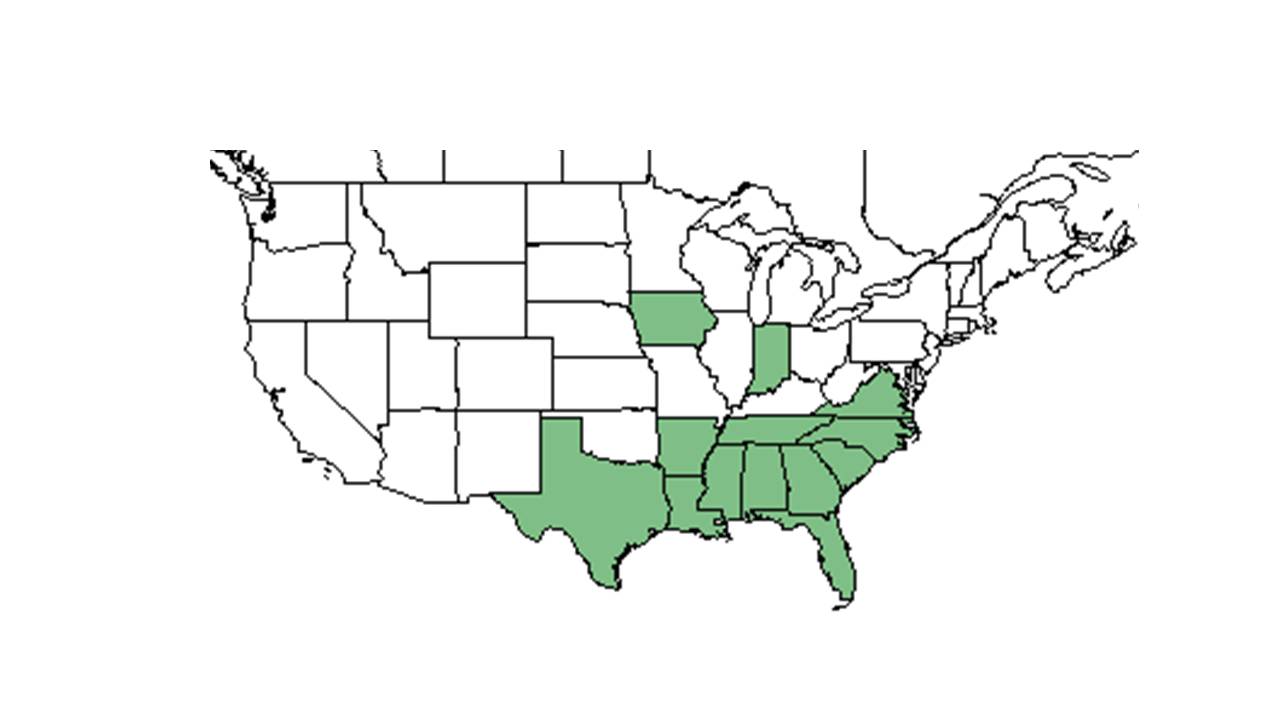Difference between revisions of "Dichanthelium consanguineum"
(→References and notes) |
(→Description) |
||
| Line 24: | Line 24: | ||
==Description== | ==Description== | ||
<!-- Basic life history facts such as annual/perrenial, monoecious/dioecious, root morphology, seed type, etc. --> | <!-- Basic life history facts such as annual/perrenial, monoecious/dioecious, root morphology, seed type, etc. --> | ||
| + | ''Dichanthelium consanguineum'' is a perennial graminoid. | ||
| − | ''Dichanthelium consanguineum'' | + | Generally, for the ''Dichanthelium'' genus, they have "spikelets usually in panicles, round or nearly so in cross section, 2-flowered, terminal fertile, basal sterile, neutral or staminate. First glume usually present, 2nd glume and sterile lemma similar; fertile lemma and palea indurate without hyaline margins. Taxonomically our most difficult and least understood genus of grasses, more than 100 species an varieties are ascribed to the Carolinas by some authors. Note general descriptions for species groups (e.g., 1-4, 5-8, 9-13, and 26-62)." - Radford et al 1964. |
| + | |||
| + | Specifically, for the ''D. consanguineum'' species, they are " | ||
==Distribution== | ==Distribution== | ||
Revision as of 19:41, 21 January 2016
| Dichanthelium consanguineum | |
|---|---|

| |
| Scientific classification | |
| Kingdom: | Plantae |
| Division: | Magnoliophyta - Flowering plants |
| Class: | Liliopsida – Monocotyledons |
| Order: | Cyperales |
| Family: | Poaceae ⁄ Gramineae |
| Genus: | Dichanthelium |
| Species: | D. consanguineum |
| Binomial name | |
| Dichanthelium consanguineum (Kunth) Gould & C.A. Clark | |

| |
| Natural range of Dichanthelium consanguineum from USDA NRCS Plants Database. | |
Common name: blood panicgrass
Synonym: Panicum consanguineum Kunth
Contents
Taxonomic notes
Description
Dichanthelium consanguineum is a perennial graminoid.
Generally, for the Dichanthelium genus, they have "spikelets usually in panicles, round or nearly so in cross section, 2-flowered, terminal fertile, basal sterile, neutral or staminate. First glume usually present, 2nd glume and sterile lemma similar; fertile lemma and palea indurate without hyaline margins. Taxonomically our most difficult and least understood genus of grasses, more than 100 species an varieties are ascribed to the Carolinas by some authors. Note general descriptions for species groups (e.g., 1-4, 5-8, 9-13, and 26-62)." - Radford et al 1964.
Specifically, for the D. consanguineum species, they are "
Distribution
Ecology
Habitat
D. consanguineum can be found mainly on dry sandy soils (FSU Herbarium). It occurs in pine flatwoods, pine-cypress savannas, and mixed pine-oak forests (FSU Herbarium).
Phenology
Seed dispersal
Seed bank and germination
Fire ecology
Pollination
Use by animals
Diseases and parasites
Conservation and Management
Cultivation and restoration
Photo Gallery
References and notes
Florida State University Robert K. Godfrey Herbarium database. URL: http://herbarium.bio.fsu.edu. Last accessed: June 2014. Collectors: L. C. Anderson, Sidney McDaniel, A. H. Curtiss, and Geo V. Nash. States and Counties: Florida: Duval, Lake, Leon, Liberty, and Okaloosa
Radford, Albert E., Harry E. Ahles, and C. Ritchie Bell. Manual of the Vascular Flora of the Carolinas. 1964, 1968. The University of North Carolina Press. 142-152. Print.